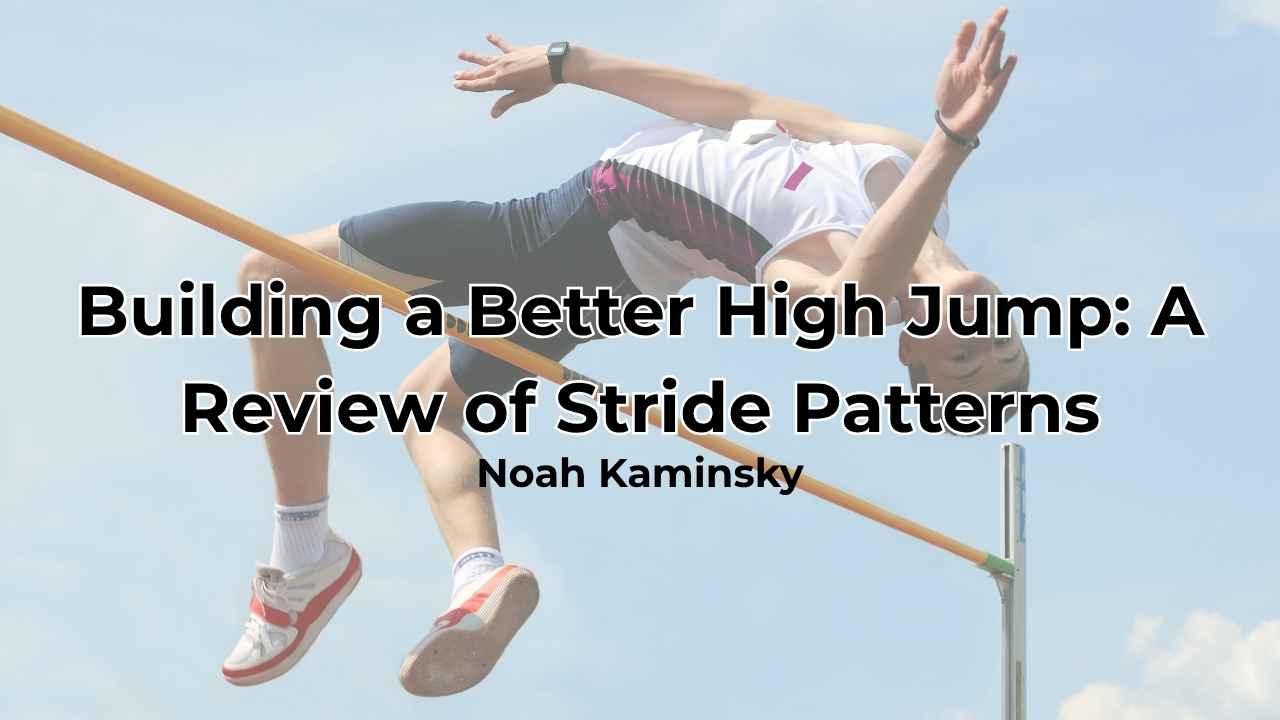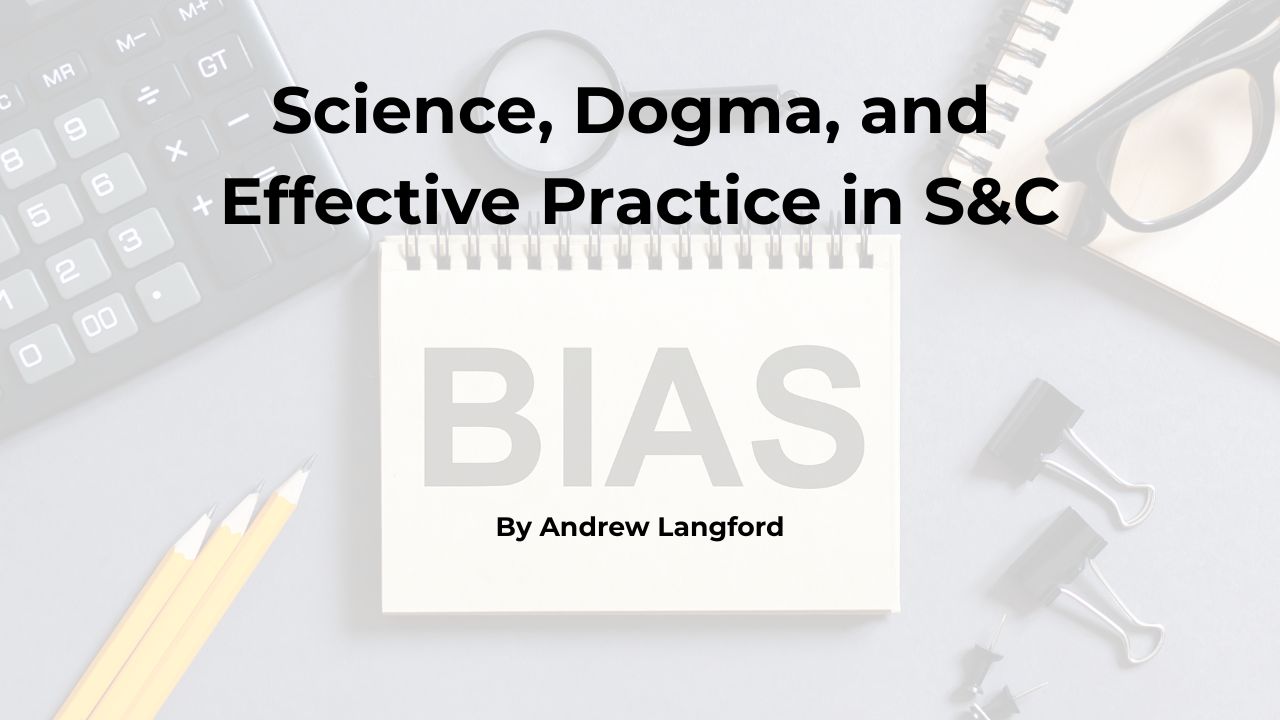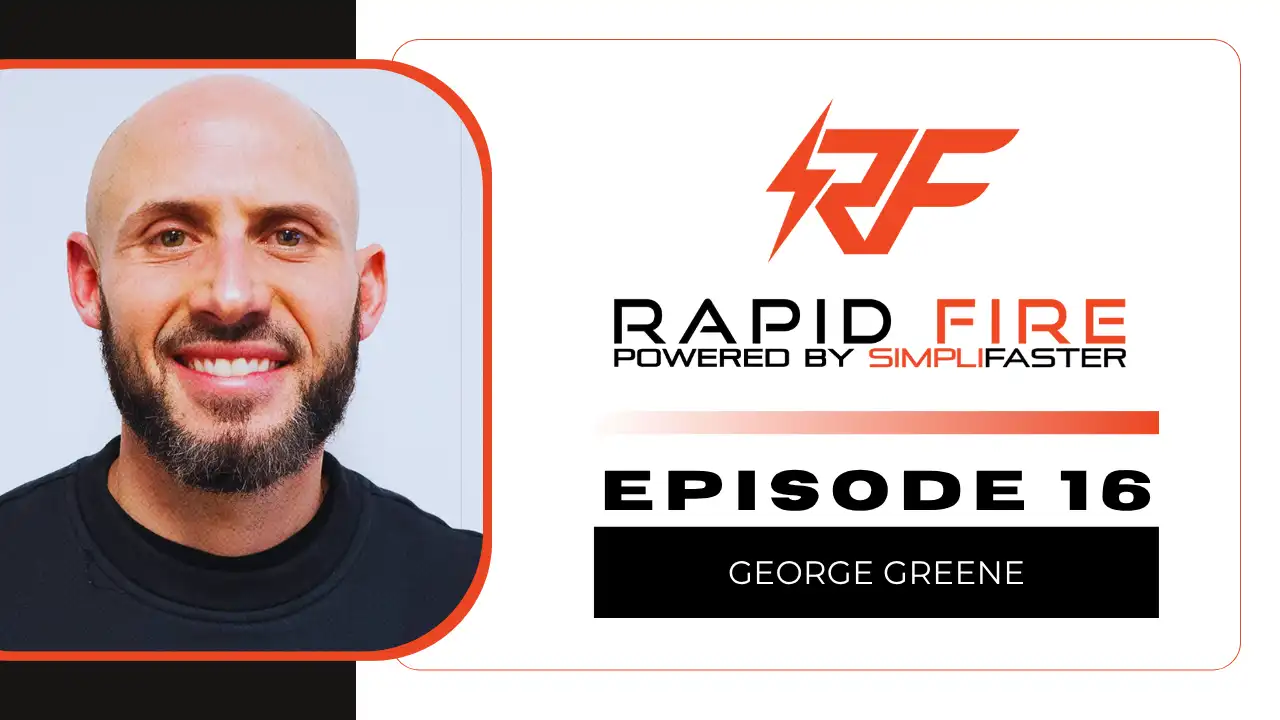[mashshare]
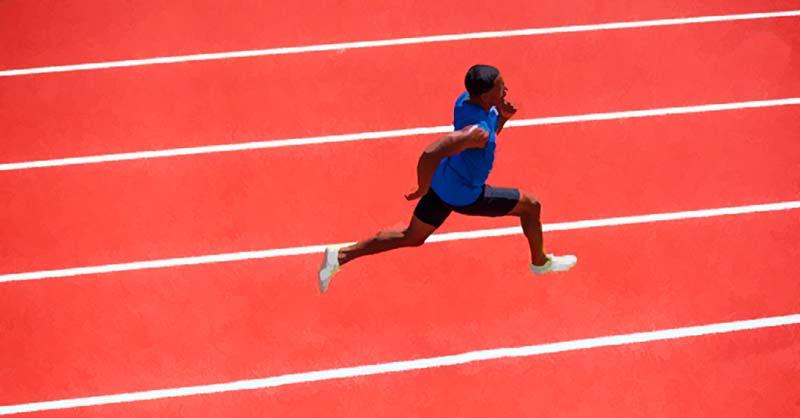
As the English Premier League and NFL publicize the top speeds of athletes on TV, a common question is how to improve them. The research on overspeed, or what the studies call “supramaximal,” is limited, and some of it is even conflicting. Roughly 90% of the articles regarding speed development are about adding load and decreasing velocity to challenge the athlete, instead of overclocking them with supramaximal options. After reading this article, any coach, regardless of level, will understand more about assisted speed work than before.
Most Coaching Articles Are Missing the Boat on Overspeed
The dirty secret is that most of the articles are garbage and not worth the paper they are printed on or the cheap server space they take up online. This may sound nasty, but I made the mistake of trusting the guidance blindly—even the scientific literature—without self-testing the information. It wasn’t until 2008 that, after listening to Hakan Andersson and PJ Vazel, I had enough confidence in the option to consider it viable.
Past research was conflicting on how overspeed specifically helped, and simply no best practices were available in coaching circles because the research wasn’t accessible. I wrote about the options and made some conservative guidelines, but only after I had actually witnessed enough speed tests to form a precise opinion. The reason most research is shaky is because of the following issues:
- Defining overspeed is very difficult to do when athletes are not properly tested maximally. In order to fully extract information, athletes need to have both sufficient acceleration and their top speed tested and recorded multiple times.
- Overspeed is sometimes called supramaximal because it assumes the notion that top speed or max velocity is what is being enhanced. Some research studied early assisted acceleration with various methods and, while technically this is overspeed as well, each modality used to create assistance may not be interchangeable.
- Exertion, a rating that Mladen Jovanovic has promoted, also needs to be considered or the data should be taken with a grain of salt. Some athletes can reach great speeds in practice or training easily, while others simply have a hard time recreating the outputs they produce in meets or games. What athletes can do in training and what they are willing to do are two different things as well, so any test requires maximal effort to be valid.
- Seasonal interpretation is rarely analyzed in research studies, so most conclusions are descriptive versus prescriptive. For example, only a handful of teams test their athletes annually, never mind periodically. Knowing the athlete’s abilities, and how they develop and why, is the only practical way to improve athlete performance and tease out relevant information.
A valid and fair argument is that overspeed training is murky, but for 30 years we have known enough about it to make a good case that it must be used carefully. To me, the Mero studies were the first breakthrough in exploring overspeed, but very little research since those studies were done in the mid-1980s has discovered much beyond the stride parameters of being towed.
My current stance is that the current science is not very strong on overspeed, and it’s a good idea to be cautious and use logic and reason to evolve speed development. After a few years of investigation, I also think we still have a perfect definition of what overspeed really is.
Assisted Speed vs. Overspeed Training: The Key Difference
” data-setup='{}’>
Video 1: Athlete above is being towed with slight assistance from the 1080 Sprint at the University of Oregon. The relative velocity and effort will determine the difference of true overspeed sprinting versus simply reducing athlete contribution with faster speeds.
I myself have used the wrong terms or used the right terms interchangeably, and I understand why many people get frustrated when talking about the subject. When we talk about overspeed, it’s similar to the concept that squares are rectangles but rectangles are not squares. When talking about speed training and ways to augment athlete velocities, the key point in understanding the difference is the specific quality being trained.
Assisted Speed is when an athlete’s velocity is enhanced at any point in their sprinting output with an external device, surface, or system. Assistance can help early acceleration, late acceleration, and maximal speed. With assisted speed, it is assumed that the athlete is being towed or perhaps running on a slight decline. Wind is technically assisted because the speed is helping performance, but it’s a decrease or resistance rather than an athlete getting an artificial boost. In my opinion, wind should be considered an overspeed option, while towing should be assisted speed.
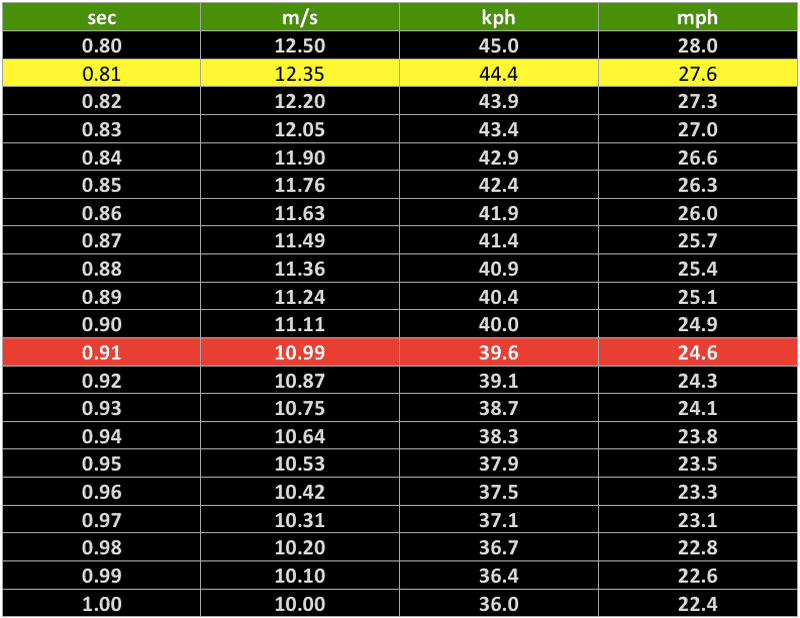
Overspeed is usually defined as enhancing an athlete’s maximal speed via an artificial or natural method. It’s a fair point to mention that coaches have used relative options to get better than “normal” outputs to develop athletes. Several techniques can improve athlete output without assisting them with a device, including simple things like changing surfaces and adding legal stimulants. Other options, like potentiation methods in training, adding motivational coaching, or even using the wind when available, induce speeds faster than what the athlete can produce on their own.
The simple takeaway is that assisted speed is mainly being towed or pulled horizontally at any velocity, and overspeed is more of an approach for taking advantage of conditions for maximal velocity development. While this article doesn’t address the definitions or identify what is going on perfectly, it does address the need for further discussion.
Overspeed Options and Maximal Speed Development
Treadmills – Since the early 1990s, the high-speed treadmill has polluted performance training in several ways. The first is the most obvious problem with treadmills: Maximal speed training without the buildup of acceleration is just not very useful. Most sports are about acceleration and maximal speed is a less common event. Although acceleration is the primary quality, top speed training generally helps with athlete preparation. It helps specifically by enhancing the nervous system and training the hamstrings and other muscle groups.
Artificially forcing an athlete to greater than their own volitional abilities is a recipe for disaster when using treadmills. Some research warns of possible mechanical breakdown to the stride, even at less than maximal speed, like 90%. Treadmills are not evil, but they are not an ideal way to develop athletes. Treadmills are useful for some athletes and also for some research, so a safe middle ground is definitely suggested.
Sloped Surfaces – Some performance research looked at negative slope sprinting or downhill running and showed decreased times or improved athlete speed. Building a sloped surface is costly and usually limited to one lane, but if you can use it and it’s done responsibly, the value is enormous. The grade must be slight for the option to make sense (read: extremely small). If the slope is too aggressive, the eccentric forces are too high and can ruin an athlete for life.
Any tinkering at maximal effort or velocity is a risk, but that’s the nature of playing with someone’s genetic ceiling. Remember that the slope or downhill modality uses the small drop of the stride to improve speed, so if it’s too aggressive it overloads the athlete and can lead to injuries to the lower extremities. Still, small exposures are an option and any coach who is working with an athlete that recognizes the risk is likely to be mature and not use the option excessively.
Elastic Bands – Elastic bands have been around a long time and some now include a protective wrap to prevent getting hit by a broken cord. Elastic cords are not reliable for delivering a smooth and safe assistance but, because they are cheap, everyone wants them to work. Having an athlete sprint with bands risks inconsistent tension and it provides very little precision in hitting specific velocities. While some coaches have found success with the bands, they are not ideal. There is risk if the elastic band is stretched to its fullest during early departure, as this results in acceleration being rushed by excessive early pulling. I am personally against bands because I have seen one specific Olympic finalist who never recovered after getting injured by their use.
Assistance systems are not new, and the classic Mero studies have hinted that more sophisticated assistance is an option for coaches. Although I’ve asked around for years, only recently did anyone have a road map or blueprint for prescribing overspeed beyond my earlier article. Limited access to overspeed means limited education on its best practices.
Wind Assistance and Wind Creation
Most coaches believe that a tailwind is the perfect performance enhancer for the ultimate training session for max velocity development. Favorable conditions with the right meet means picking the right races for an athlete and racing only when ready.
Great conditions in competitions yield the best workouts in the long run. Share on XNo matter how motivated an athlete is in practice, meets will always simulate the fastest training stimulus. More than 10 years ago, I was introduced to the concept of “race to train and train to race” by Coach Benson, who was a former state champion in swimming and very resourceful. Countless coaches try to find the best tracks for getting their sprinters favorable conditions, and they are what I call “Storm Chasers”—all looking for the magic tailwind.
Venues like UTEP and Rieti in Italy are preferred for their hard tracks and great winds, as some of the fastest times have been set when a good surface and favorable tailwind merge together. The sprint theory is that more quality performances lead to faster times without wind, and that is true with training. Faster practices tend to help overall with faster performances, but only when organized properly.
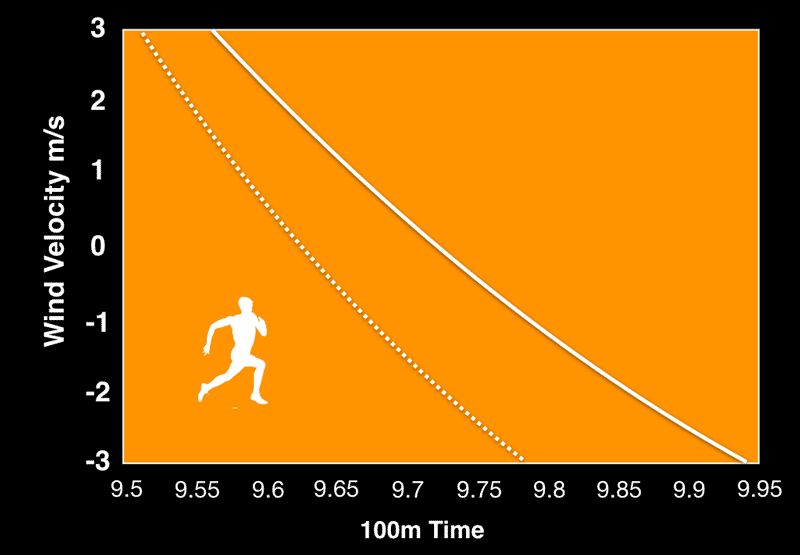
Towing is similar to wind only when the assistance is a therapeutic dose, because maximal or beyond maximal work is pushing the body beyond what it’s ever done. Nearly every sprint coach loves a windy race, but if you mention towing with a machine, many get spooked, including me. Towing with slight assistance is not the same as getting dragged by horses in a Spaghetti Western: It’s a gentle tug, not a hard yank. But both coaches and athletes fear the possibility of injury and the danger of burns from getting pulled to the ground from overspeed rubber cords.
The catalogs selling the elastic bands have tainted overspeed training because so many accidents have come from cords failing, and I was skeptical and fearful myself after witnessing a few fails. However, in 2014, I experienced the slight assistance from machine towing and it was indeed a smooth experience that was like a good tailwind. There was nothing jerky or unnatural; just a slight assistance without the feeling of being out of control or getting artificially pulled. In fact, the best assistance setting for towing is a speed that is only a little more than the athlete can produce in that specific day—not an aggressive and arbitrary setting.
If you are a believer and fan of wind assistance, then you have to consider if towing is close enough to wind assistance to merit exploring the idea. If towing creates similar effects to speed as wind, you can make the argument that it’s simply a portable wind machine or “tailwind creator.” Portable wind should be a very interesting opportunity for coaches and athletes. Although altitude is something that can’t be created in a portable form for sprinters, as the speed athlete needs to race fast not sleep in a tent, the wind option is available in many forms.
The Science of Towing: Sprinting at Supramaximal Velocity
A common question asked is: “What happens to the stride technique and forces when getting towed or with wind?” Based on research, it seems that stride length improves and stride frequency doesn’t, but the truth is we don’t have enough information to make a definitive statement. One reason is that equipment and research designs are all different, so each study is specific to how that particular athlete was tested and what was used for equipment.
LeBlanc and Gervais studied towing assistance and made the following conclusions:
- Assisted sprinting has similar kinematics to free top-speed sprinting.
- Assisted sprinting does not have greater stride rates than free sprinting.
- Resisted sprinting has similar kinematics to the acceleration phase of a sprint.
- Coaches and athletes should carefully consider the biomechanical parameters and neuromuscular patterns associated with any sprint training modality before committing extensive training time to these special methods.
While the summary of the two researchers was expected, the small details from other studies and deeper analysis explain why the observations above are true and what may need to be evaluated again with elite athletes. The velocity of the subjects was 9-10 m/s (meters per second), hardly the 12 m/s of elite sprinters. The well-known Weyand research does explain that the stride motion is likely the same total duration for both non-elites and elites, so it’s fair to conclude that the data from the Canada study is universal to all sprinting speeds. Here are some deeper insights from new research:
- Elite and sub-elite sprinters have commonalities in some variables, as well as some important differences. Ralph Mann has publicly shared data on stride parameters, as has PJ Vazel; much of it showing differences that are varying enough to ponder. Stride parameters are not just stride length and stride frequency: As Jon Goodman illustrated, contact time and contact length are likely more useful, so it’s good to look at all of the information first before coming up with conclusions.
- Stride length from being towed increases because an athlete is getting assistance all the time. The most important element in towing is that horizontal assistance is constant from foot contact all the way to toe off and recovery. Vertical forces are not affected since the resistance is parallel to the ground, but athletes with short contact lengths may find their stride opening up and reach more.
- Athletes do not increase their propulsive forces when towed, as the increase of speed is from assistance, but the braking forces do increase early in the foot contact. The increase in braking forces is simply an overload variable that can be used, and it may be a positive quality if used right. Like any overload option—assisted or not—risk increases as the athlete increases velocity.
All of the details are important because towing provides a unique opportunity for the body to have neuromuscular firing patterns similar to free sprinting. Having the body and athlete become comfortable and relax at higher speeds is a possible training effect, but the research is scant because the nature of access to elite athletes. Getting elite athletes and coaches to experiment and try anything different than what they do is a difficult proposition!
The 1080 Sprint: Supramaximal Speed and Assisted Acceleration
I was commissioned by Simplifaster to investigate the 1080 Sprint because several elite coaches wanted to see if it could deliver the theoretical benefit that most equipment fell short on. Could it help improve an athlete by assisting the speeds in acceleration and/or max velocity? I spent three months both experimenting directly with the device and asking those that had it.
It could be tempting to isolate the qualities of acceleration, maximal velocity, and supramaximal speed, but all of them work together. Every maximal sprint, even a brief 10m sprint, requires a heavy acceleration zone. The cost of doing just one short maximal fly sprint isn’t the length of top speed, but the entire effort from start to finish, including the deceleration. Having early assistance can dramatically increase the learning window by expanding the exposure to high velocity running.
Understanding assisted acceleration is actually more complicated than understanding top speed or supramaximal velocity. Each step increases stride frequency and stride length, so coaches are looking for assistance to smoothly match the rate of velocity change. In fact, coaches likely want harmonious synchronization with each athlete’s pattern, something that can be done with towing.
Video 2: World and Olympic champion Christian Taylor running an impressive 12 m/s with the use of the 1080 Sprint while training in Florida. Taylor is coached by Rana Reider, one of the leading track coaches internationally.
Most coaches are familiar with elastic cords and are accustomed to the jerky and uncomfortable rapid pull, but towing based on precise velocities and light loading is safe and smooth. The most common question that comes up is, of course, about safety. When a coach envisions towing, the biggest fear is dragging an athlete and injuring them. This speed device simply can’t drag even a small child, and the settings are about small but effective improvements.
Best practices for towing is just a gentle assistance; avoid harsh yanking forces. Share on XGentle early acceleration assistance from towing—one that is barely noticeable but physiologically less taxing than unassisted acceleration—is a true opportunity for coaches and athletes, based on the research. You use less exertion to reach maximal velocity, and athletes can then either hit normal speeds or be exposed to higher than volitional speeds.
The 1080 Sprint and Rhythm Development
Constant velocity is often used for pacing strategies, but the current research on central pattern generators demonstrates that the brain has preprogrammed firing routines in locomotion. Without getting into unnecessary neurophysiology, complex coordination is not necessarily always learned, but it’s often revealed or pruned from the cerebellum. Athletes usually have an array of gifts inside their heads, and they just need to allow their body and mind to trust each other, rather than try to basically re-learn something that nature has already implanted. Constant velocities with longer exposures improve relaxation and contraction rates, but at a physical cost.
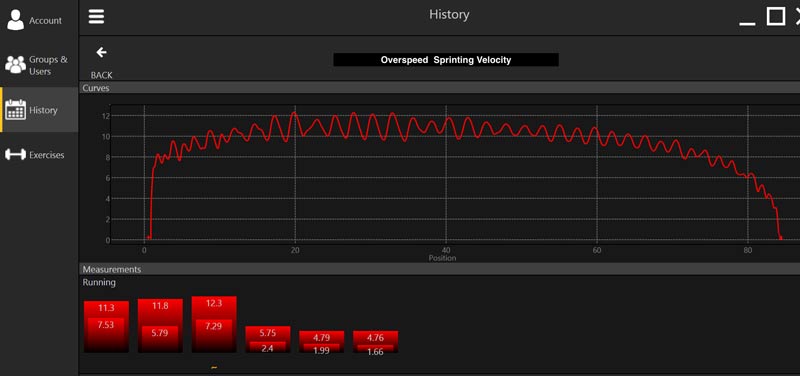
Athletes and coaches have used longer runs and slower velocities, not because they are conditioning, but because they can maintain a rhythm longer and allow the stride to fall into place. The faster the velocity, the shorter the constant speed in the race. The 100m sprint is a perfect example of only having a speed constant for 1-2 seconds on average, and each step is variable as well. Using a longer repetition with the same speed simply increases the volume of high velocity work at a natural rhythm.
Besides running, some Olympic coaches have employed jumping routines such as short but extended bounding with podium talents, but this should be done sparingly with advanced athletes who have such abilities.
Conclusions on Assisted Speed Training
Assisted speed training is a valid option in training that is supported to be similar to free or regular sprinting. Coaches should not worry that mechanics are going to be altered and possibly ruined, as the best practice of towing is just a gentle assistance, not being yanked by harsh forces. Obviously, athletes need to be experienced and properly prepared before seeking out assisted options, but methods that expose the athlete to motor learning environments are major opportunities. Slight assistance, like a friendly wind, is a productive way to improve performance.
Since you’re here…
…we have a small favor to ask. More people are reading SimpliFaster than ever, and each week we bring you compelling content from coaches, sport scientists, and physiotherapists who are devoted to building better athletes. Please take a moment to share the articles on social media, engage the authors with questions and comments below, and link to articles when appropriate if you have a blog or participate on forums of related topics. — SF
[mashshare]

